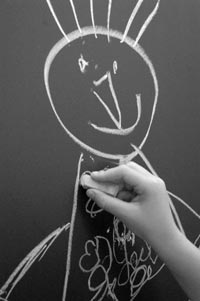E-publishing and multimodalities
 In the literature of e-publishing there
has been a consistent call from the advent of e-publishing on, until
now, to explore new ways of expressing ideas through the new media. It
has been claimed that the Internet opens an alley of possibilities and
opportunites for publishing that will change the ways of publishing
once and for all. In the area of publication of e-journals, however,
the call for changes has received very modest responds.
In the literature of e-publishing there
has been a consistent call from the advent of e-publishing on, until
now, to explore new ways of expressing ideas through the new media. It
has been claimed that the Internet opens an alley of possibilities and
opportunites for publishing that will change the ways of publishing
once and for all. In the area of publication of e-journals, however,
the call for changes has received very modest responds.
The thing is, it appears, that the conventional paper journal has a solid grip on the accepted formats of publishing. In a published research paper Mayernik (2007) explaines some of the reasons for that. Although pioneers of e-publishing suggested various areas where academic publishing could be expanded on, the opportunities given are scarsely used. Mayernik outlines "Non-linearity", "Multimedia", "Multiple use", "Interactivity" and "Rapid Publication" as areas of expansion for the academic e-journal. (2007). The paper deserves a thorough reading in itself, and I will briefly quote from his conclusion: "It is likely that the traditional linear article will continue to be the prevalent format for scholarly journals, both print and electronic, for the foreseeable future, and while electronic features will garner more and more use as technology improves, they will continue to be used to supplement, and not supplant, the traditional article."
